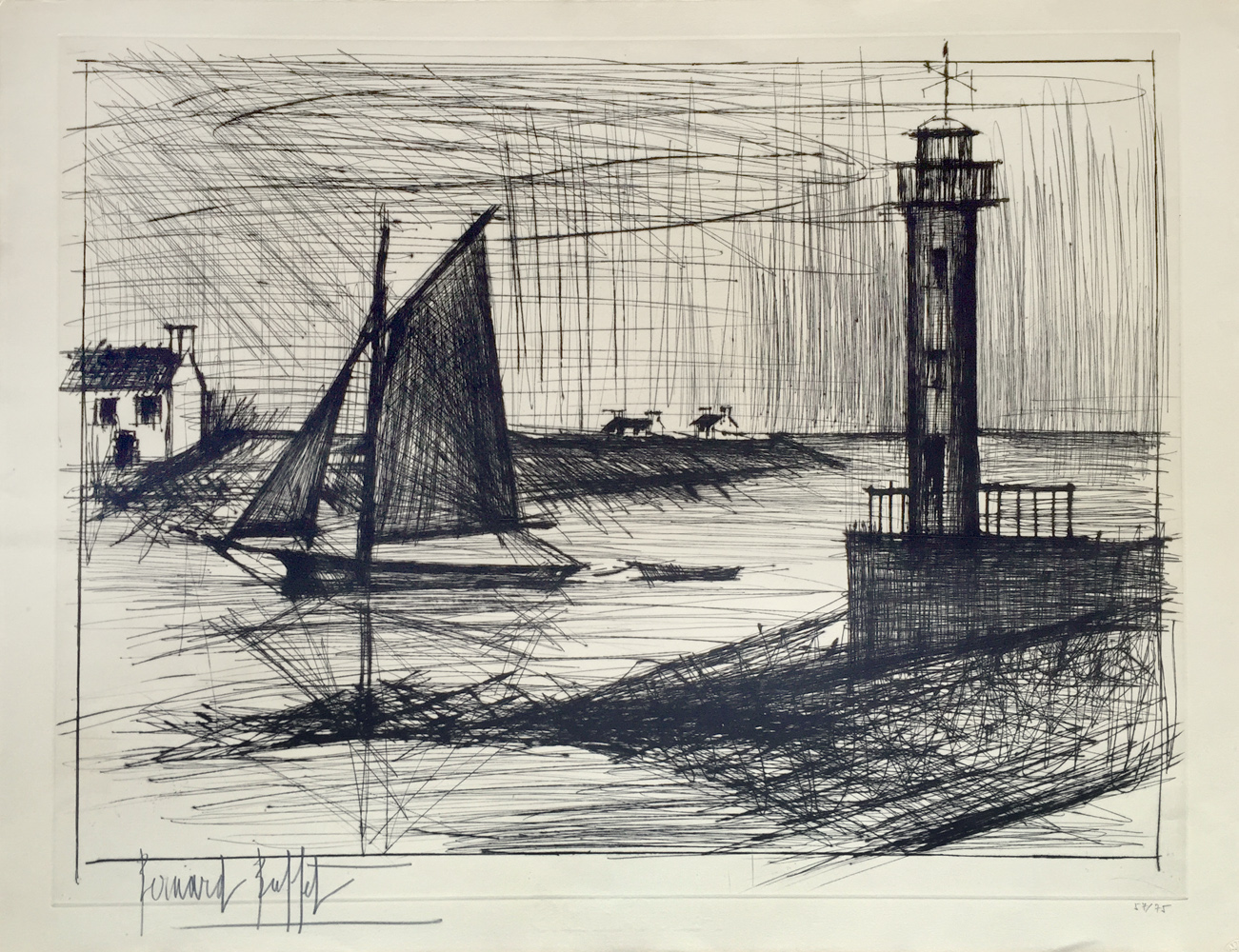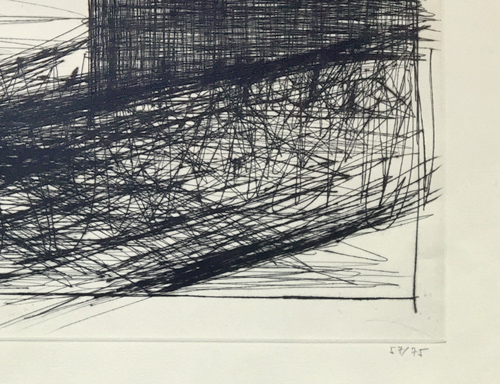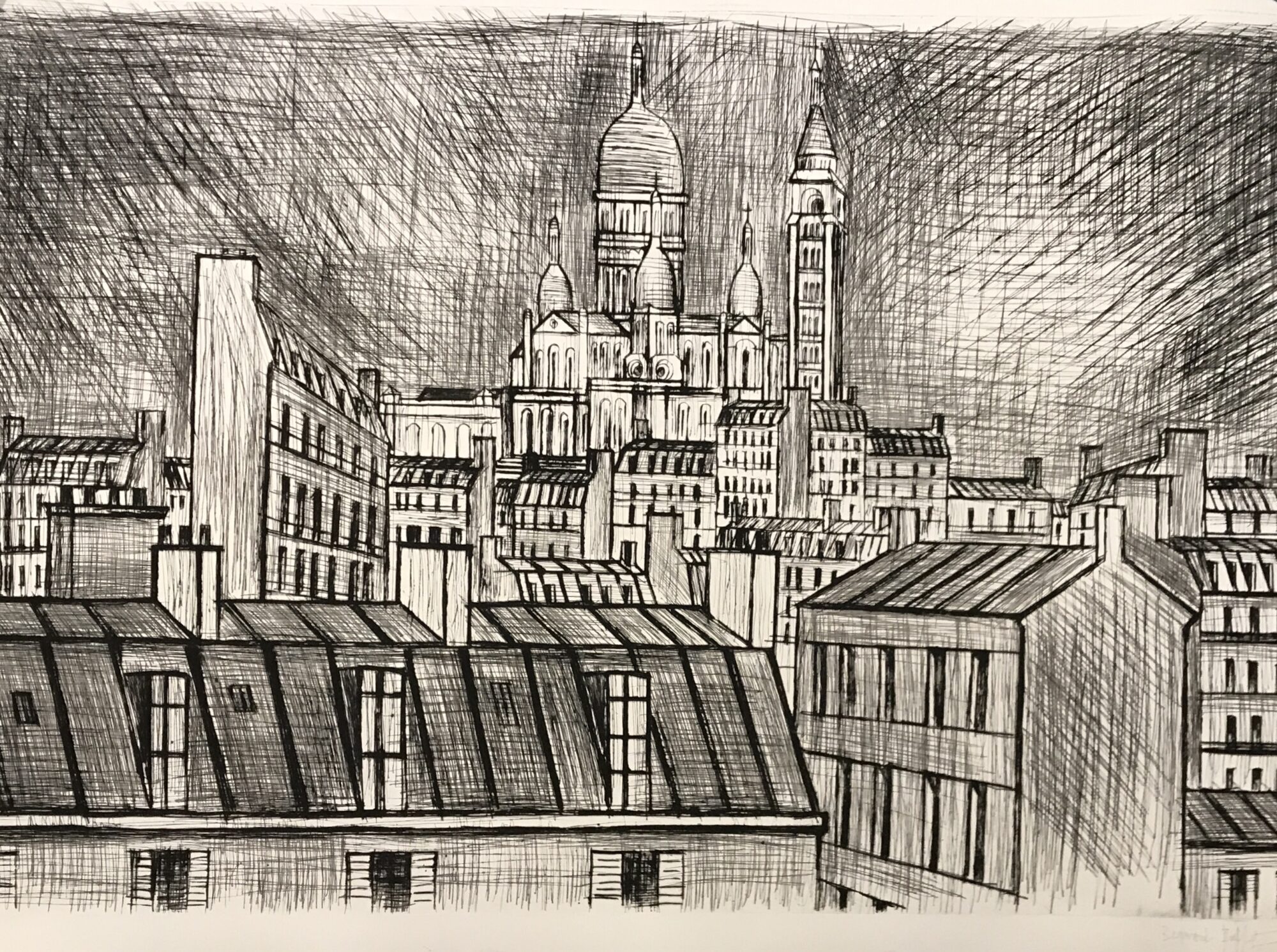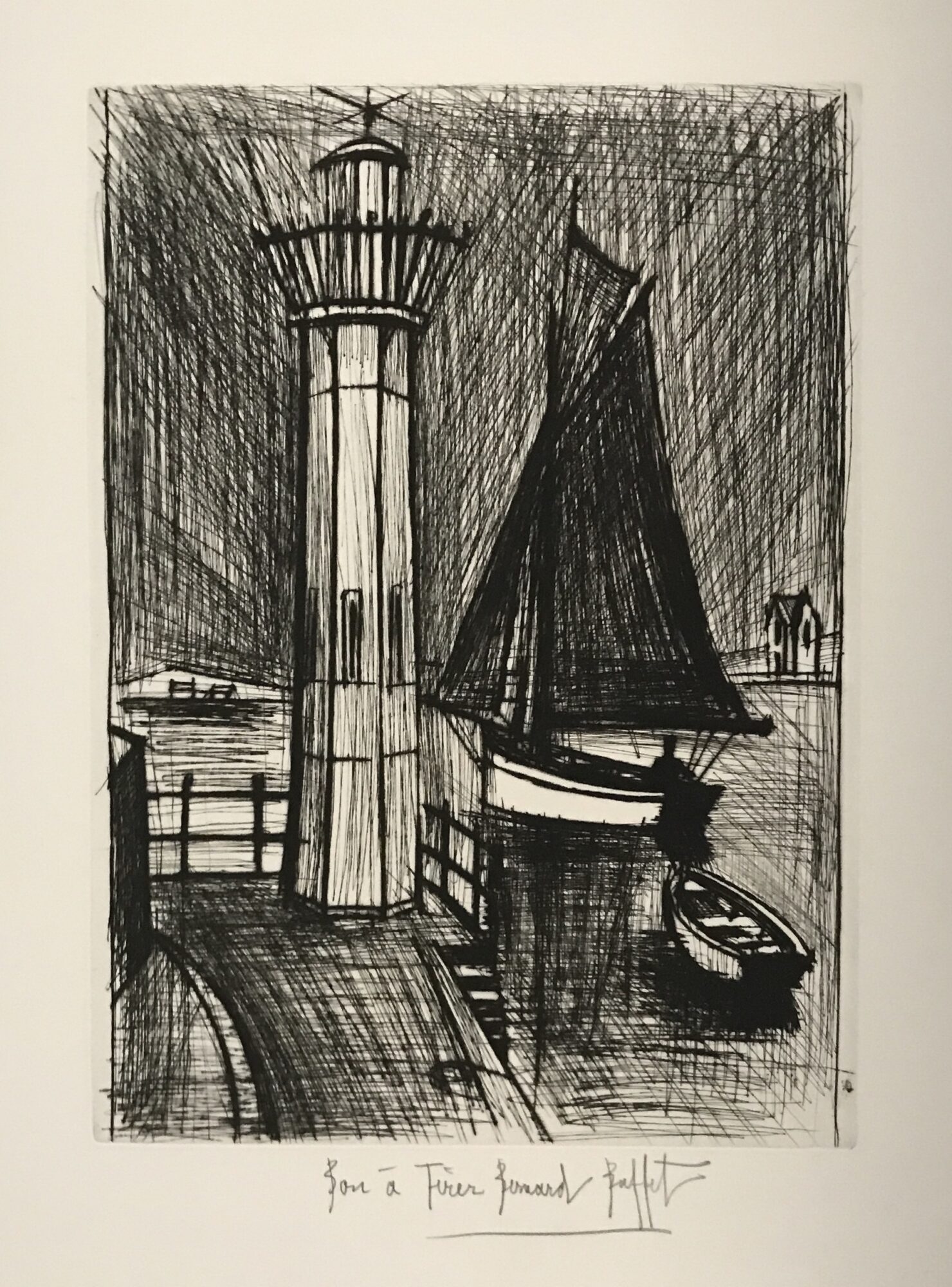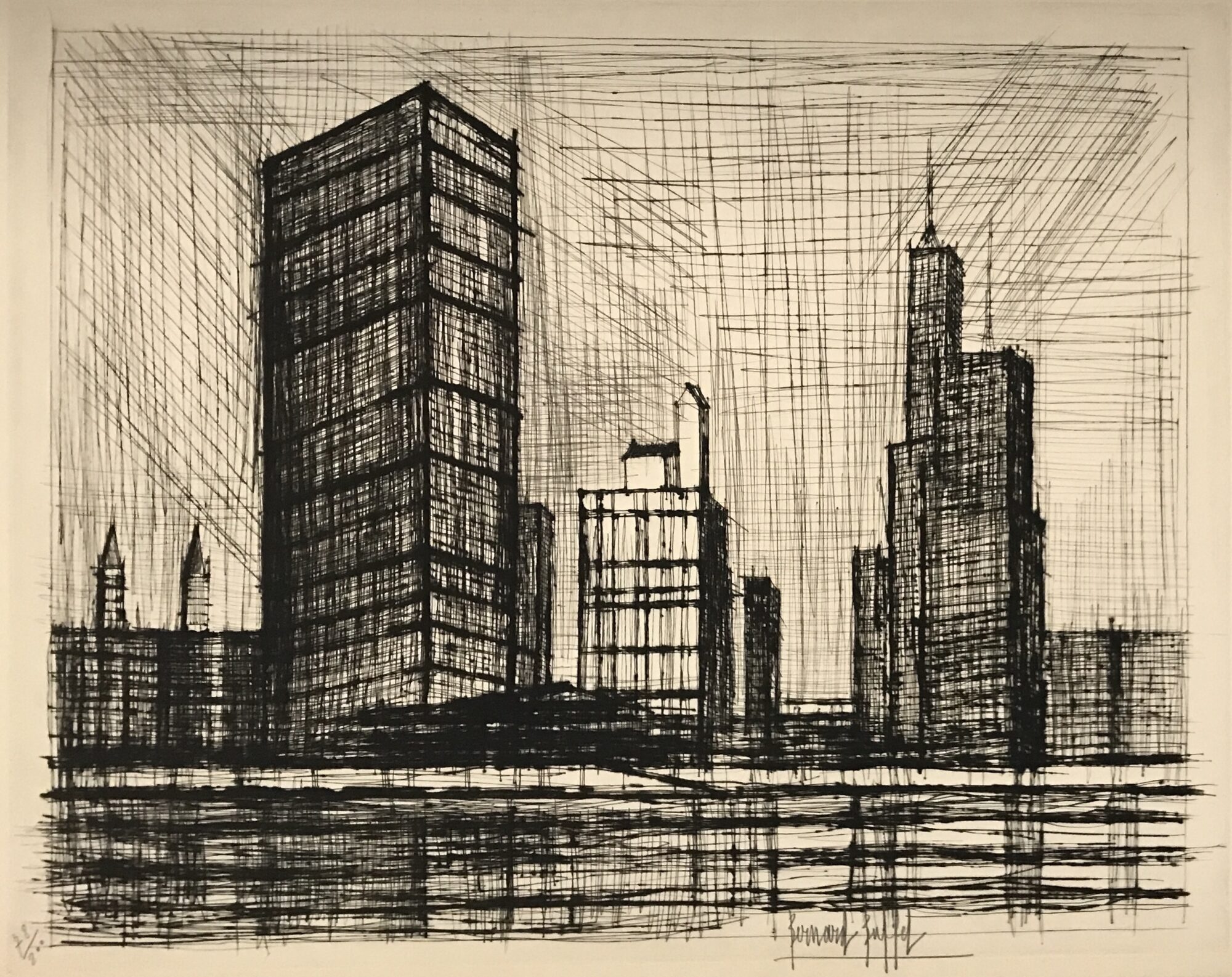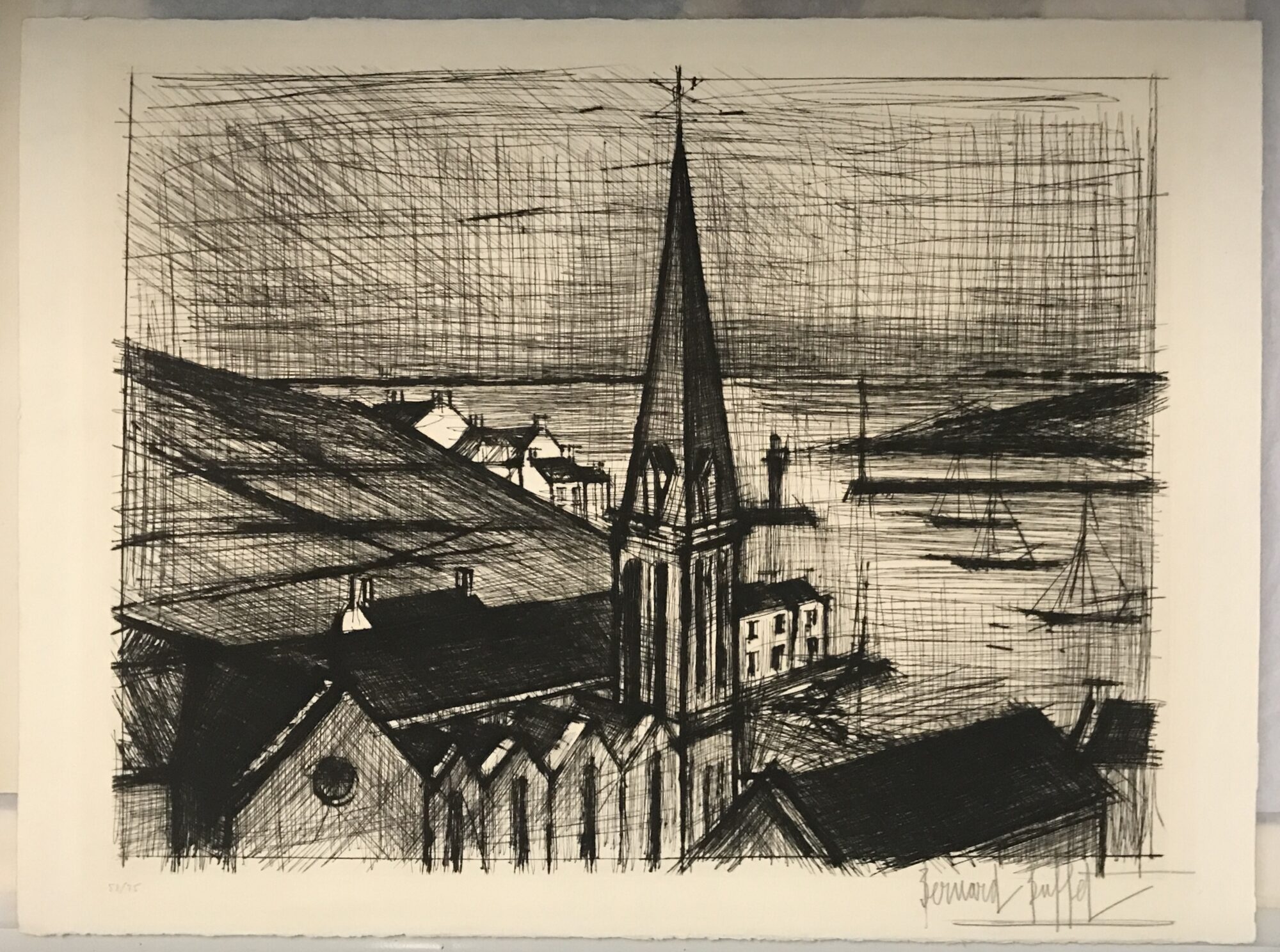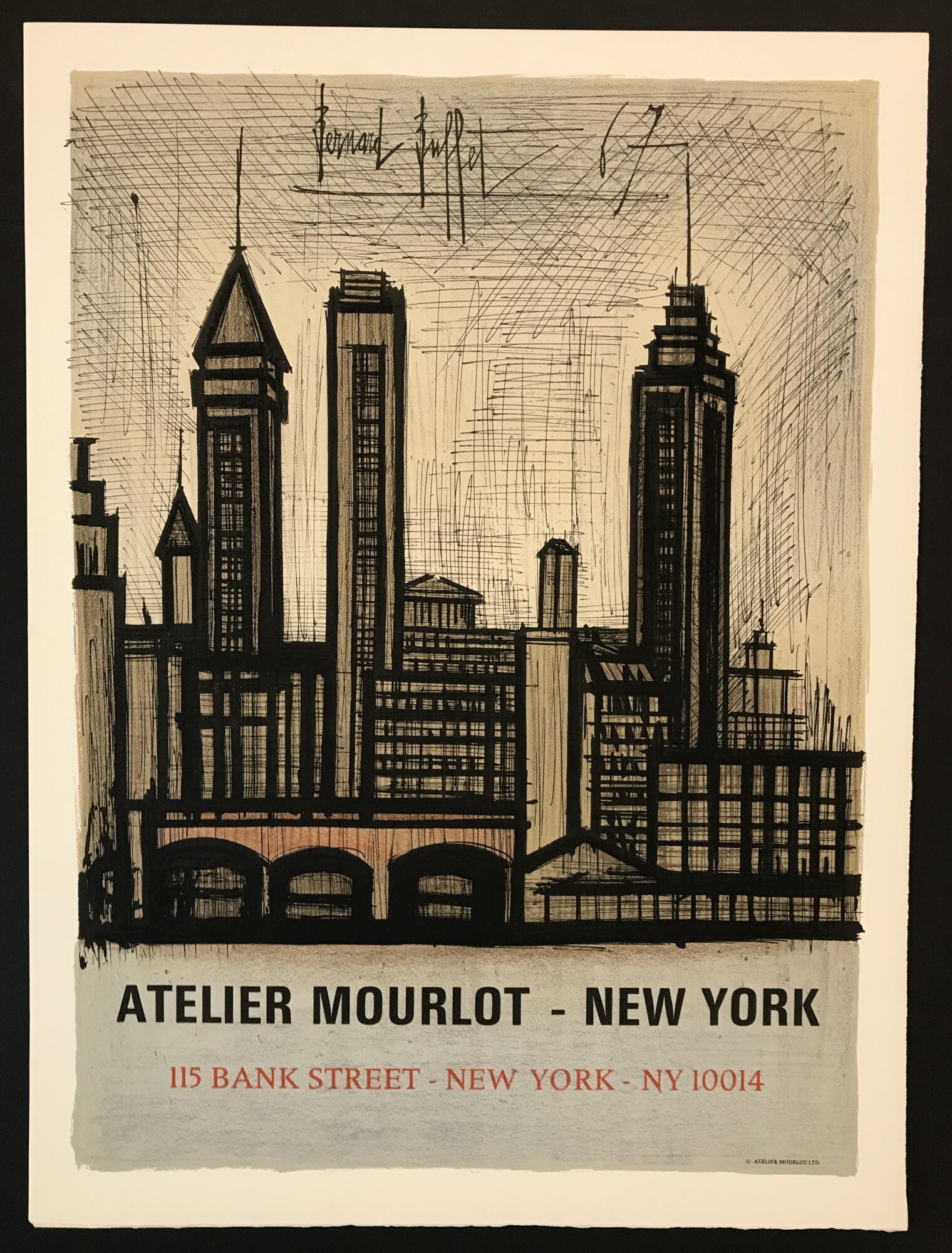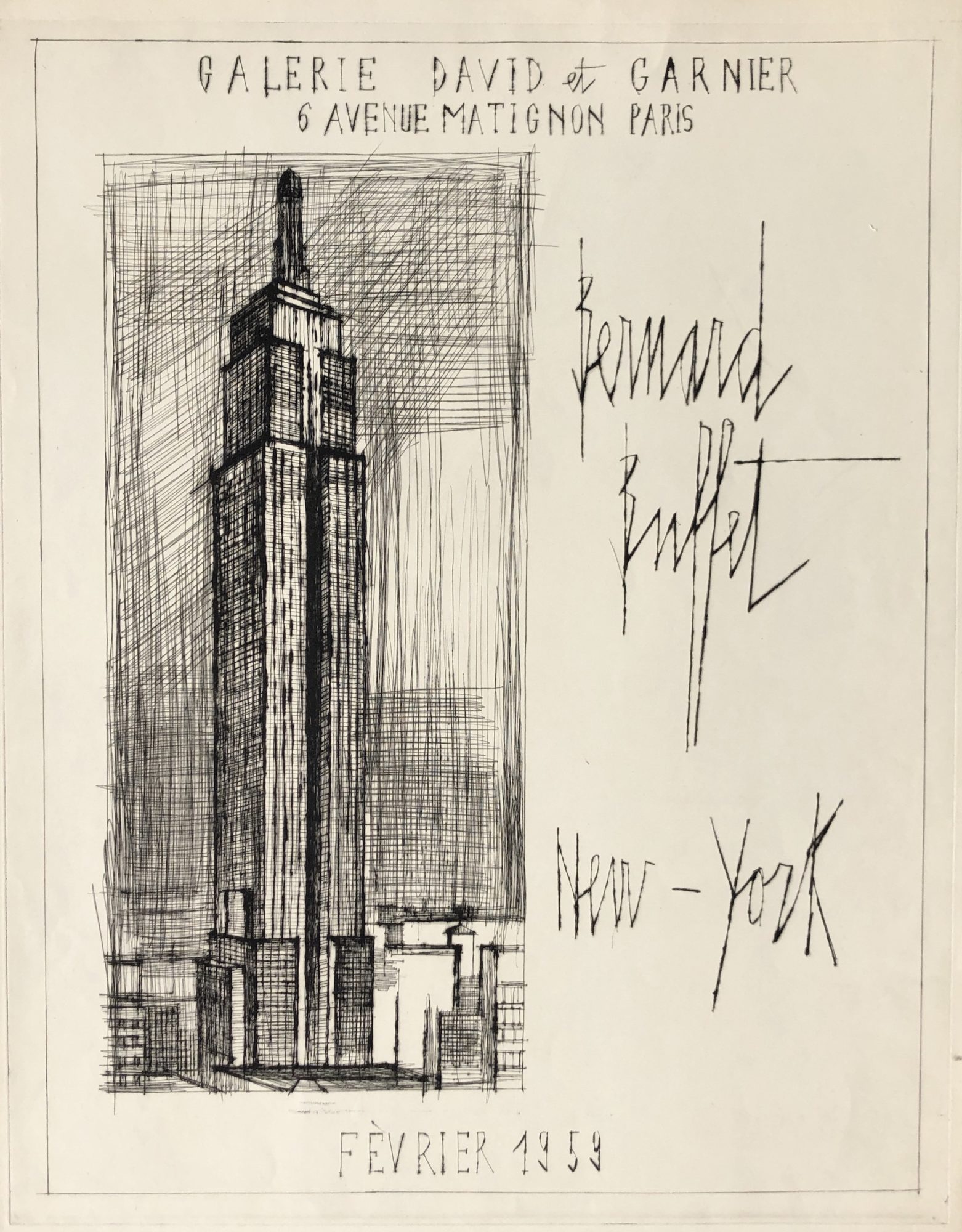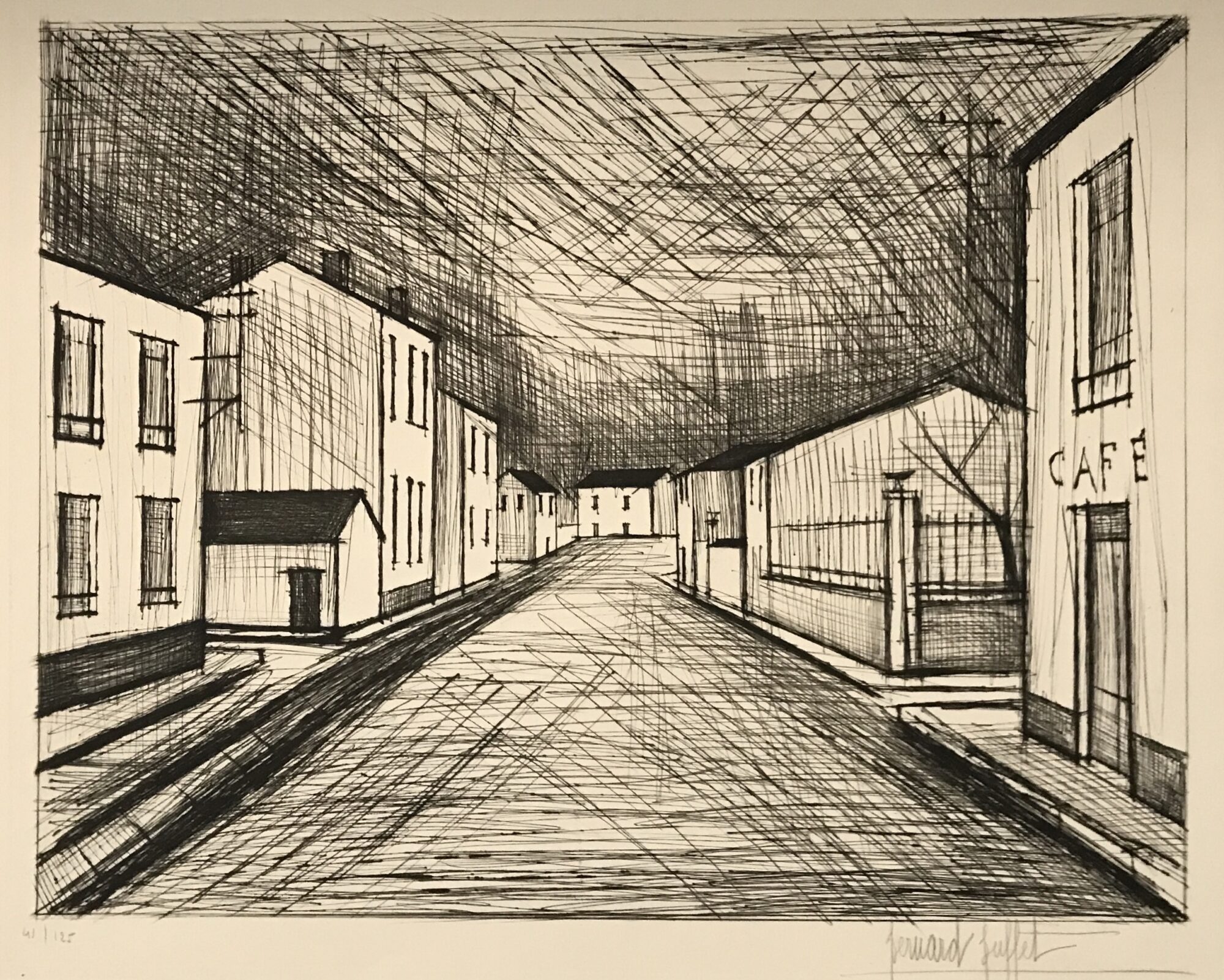Bernard Buffet – L’embouchure de L’Odet
Bernard Buffet, L’embouchure de L’Odet is an original drypoint on Arches Paper. This print is signed on the lower left margin of the page and numbered edition of 75. Rheims 33.
L’embouchure de L’Odet exhibits Buffet’s signature style recognizable by thick, angular black lines that outlined his somber themes. He excelled in painting and drawing, winning prestigious prizes and attracting attention for his style of art. Buffet shows Paris itself, traditionally portrayed as lively and colorful, in a hard and lifeless manner. Although frequently viewed as heavy and foreboding, there is also a level of beauty in the work of Bernard Buffet. His style is defined by “dry” straight lines revealing the shape of buildings and bodies.
Buffet was born in Paris in 1928 and grew up during the Nazi occupation, enduring the war and years of deprivation, and the experience inspired much of the glum imagery in his work. He excelled in painting and drawing, winning prestigious prizes and attracting attention with a signature style recognizable by thick, angular black lines that outlined his somber themes.
| Title | L’embouchure de L’Odet |
|---|---|
| Alt. Title | The Mouth of Odet |
| Medium | Drypoint |
| Year | 1962 |
| Edition | 75 |
| Catalogue Raisonné | Rheims 33 |
| Signature | Signed |
| Size | 22 x 29 (in) 56 x 73.75 (cm) |
| Price | Price on Request |
Description
Bernard Buffet, L’embouchure de L’Odet is an original drypoint on Arches Paper. This print is signed on the lower left margin of the page and numbered edition of 75. Rheims 33.
L’embouchure de L’Odet exhibits Buffet’s signature style recognizable by thick, angular black lines that outlined his somber themes. He excelled in painting and drawing, winning prestigious prizes and attracting attention for his style of art. Buffet shows Paris itself, traditionally portrayed as lively and colorful, in a hard and lifeless manner. Although frequently viewed as heavy and foreboding, there is also a level of beauty in the work of Bernard Buffet. His style is defined by “dry” straight lines revealing the shape of buildings and bodies.
Buffet was born in Paris in 1928 and grew up during the Nazi occupation, enduring the war and years of deprivation, and the experience inspired much of the glum imagery in his work. He excelled in painting and drawing, winning prestigious prizes and attracting attention with a signature style recognizable by thick, angular black lines that outlined his somber themes.
Embodying Jean-Paul Sartre’s Existentialism and Albert Camus’s Absurdism, Bernard Buffet’s painting conveyed the anxiety that permeated France during the Nazi occupation and came to dominate the post-war figurative art scene. A member of a group called L’Homme Témoin (The Witness) along with Bernard Lorjout and André Minaux, Buffet developed a realist style infused with social criticism, featuring a restrained palette and black outlines. He is best known for his grim “Horror of War” series and myriad streetscapes and interior scenes populated by angular, emotionless figures. Self-portraits, religious scenes, still lifes also figure among his oeuvre, which extends to lithography, engraving, and sculpture. While Buffet continued to enjoy success as a commercial artist until a debilitating illness prompted him to commit suicide, his work fell out of favor among critics in the 1960s and remains relatively unknown.
Additional information
| Title | L’embouchure de L’Odet |
|---|---|
| Alt. Title | The Mouth of Odet |
| Medium | Drypoint |
| Year | 1962 |
| Edition | 75 |
| Catalogue Raisonné | Rheims 33 |
| Signature | Signed |
| Size | 22 x 29 (in) 56 x 73.75 (cm) |
| Price | Price on Request |


